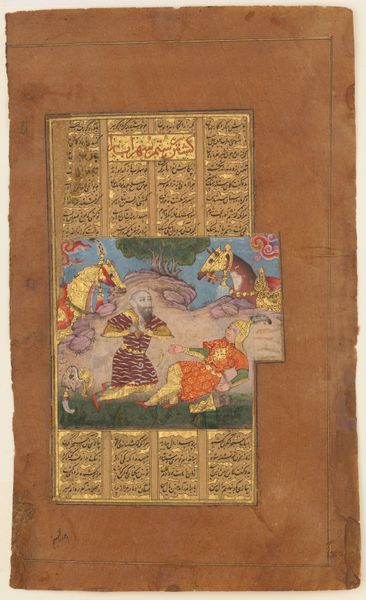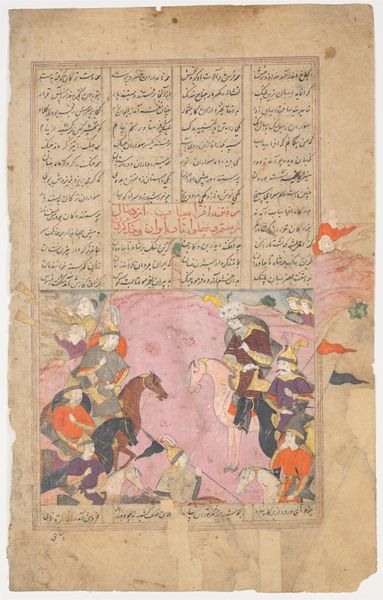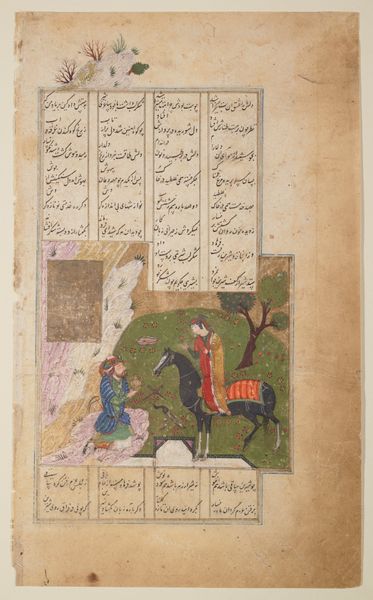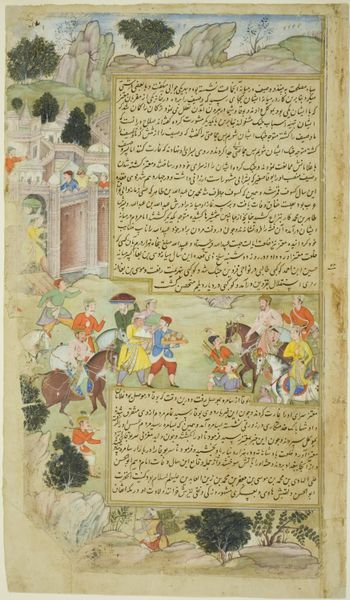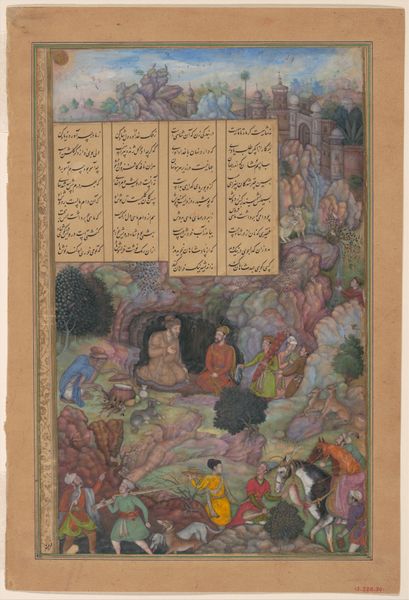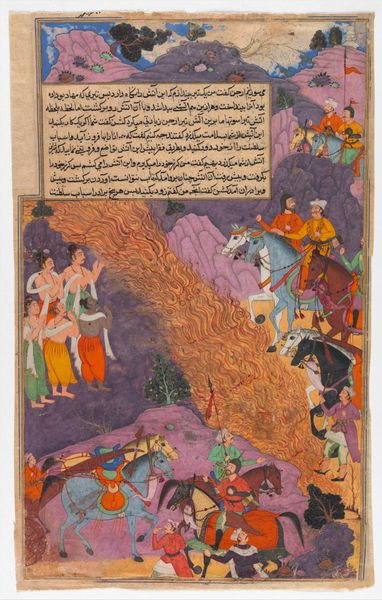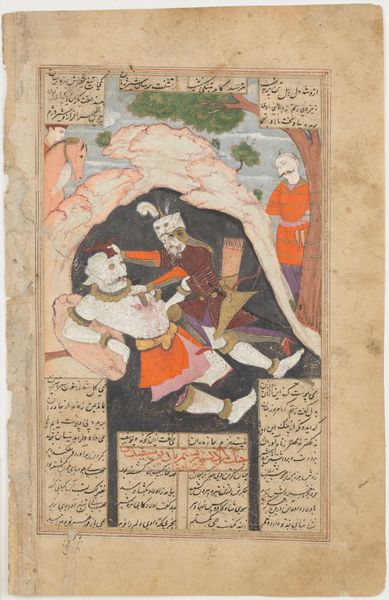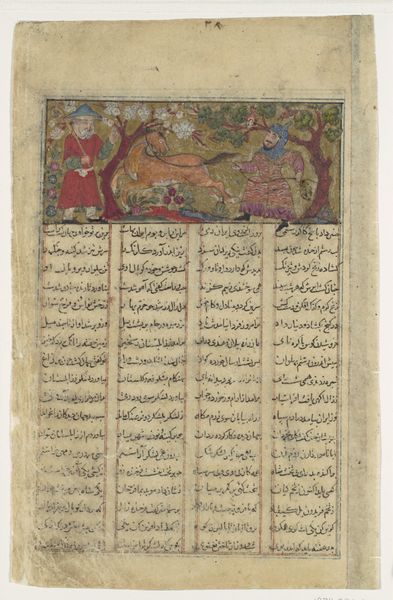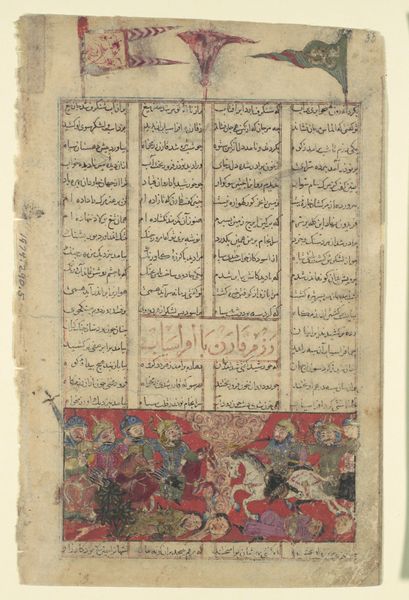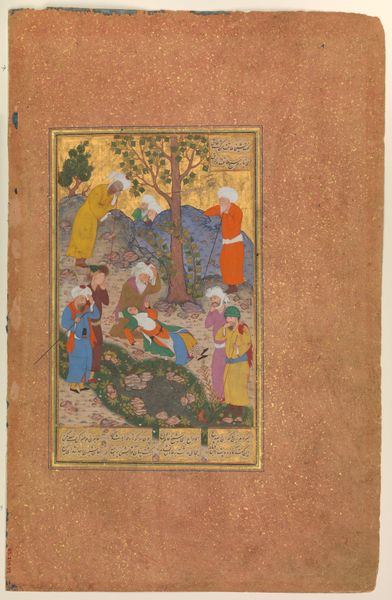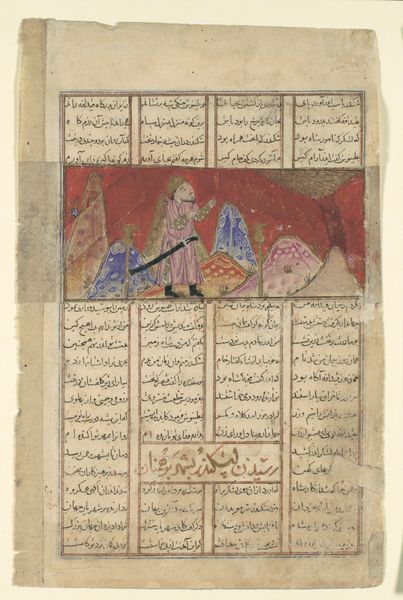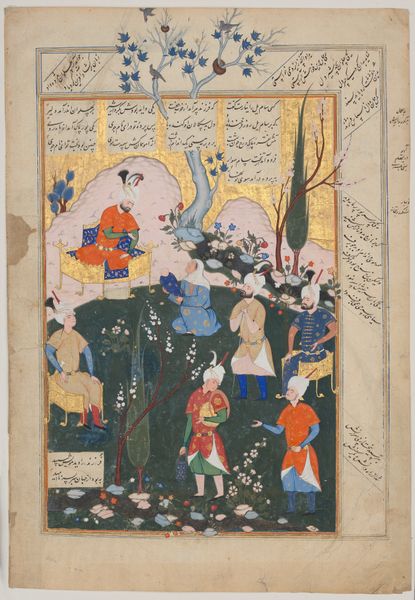
"Death of Farud", Folio from a Shahnama (Book of Kings) of Firdausi 1585 - 1635
0:00
0:00
tempera, painting
#
narrative-art
#
tempera
#
painting
#
death
#
figuration
#
men
#
islamic-art
#
history-painting
#
miniature
Dimensions: Page: H. 8 in. (20.3 cm) W. 4 7/8 in. (2.4 cm) Painting: H. 3 5/16 in. (8.4 cm) W. 3 9/16 in. (9.1 cm)
Copyright: Public Domain
Curator: This intricate painting is a folio from a Shahnama, or Book of Kings, specifically depicting "The Death of Farud." It comes to us from Persia and was created sometime between 1585 and 1635. Editor: The image just feels so contained, doesn't it? Almost like a world viewed through a keyhole. Tragic too, obviously. The central figure draped so dramatically...it reminds me a bit of those old history paintings. Curator: Absolutely, its a miniature after all, created with tempera, offering such exquisite detail despite its intimate scale. Let's break down what’s happening: We see Farud, fallen, likely betrayed given the epic tales woven into the Shahnama. Another man leans over, either in grief or as a perpetrator of sorts, and a figure stands above surveying the grim vista. Editor: Its very stillness heightens the drama. Everything, from the careful gold leaf in the margins to the stylized rendering of the rocks and foliage, just contributes to a feeling of solemnity. And tell me, that decorative script border-- does it relate directly to the visual narrative here? Curator: It does. These illuminated texts, a real signature of manuscripts from the Islamic world, include verses from Firdausi's poem which accompany and enhance the scene depicted. Notice how the artist integrates textual and visual elements creating this multilayered artwork experience. The colors, too, don’t shy away from richness despite the solemnity of the scene: that bold red against the gold and subdued blues… it is striking. Editor: Right, and thinking about its function as part of an illustrated book – this scene, frozen in time with the exquisite use of color and gold, it creates an experience for the viewer. Death made beautiful, I suppose, or at least visually arresting. There is that hint of grandeur or celebration. But is the artist glorifying or maybe condemning death, and possibly deceit here? What would you suggest? Curator: Yes, perhaps a glorification, and to its patron it may be more reflective on the concept of just leadership, duty, and inevitably loss and betrayal. It gives us a fascinating snapshot of a culture grappling with mortality. Editor: And perhaps a lesson on the fleeting nature of life… I do appreciate now the work's balance between tragedy and beauty, making a quiet, haunting statement about history and its heavy, yet gilded, price.
Comments
No comments
Be the first to comment and join the conversation on the ultimate creative platform.
